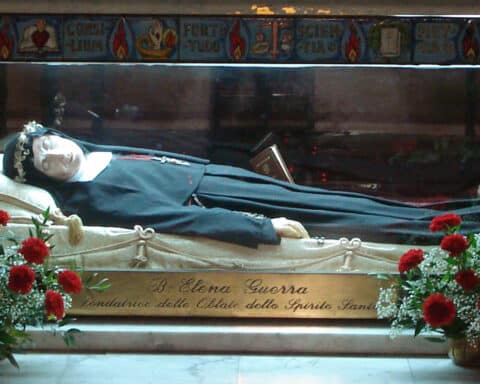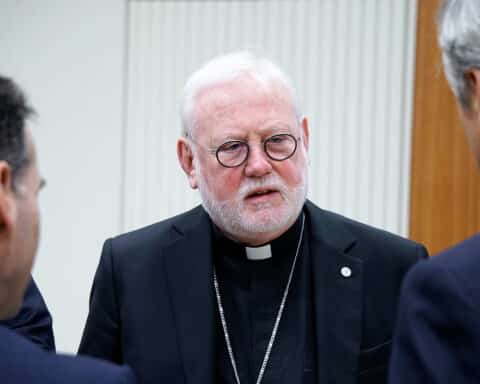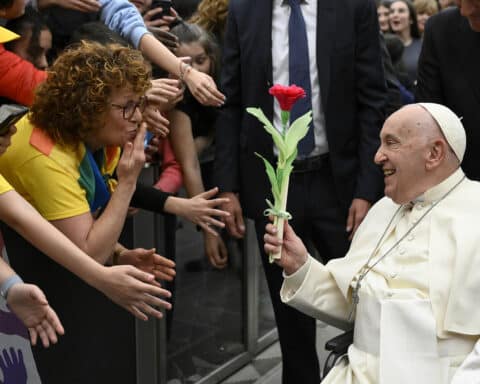Has there ever been a beatification similar to that of the Ulma family? “In recent times and with the current procedures there have never been any; perhaps for such cases we need to go back to antiquity.” This is the conclusion of the prefect of the Dicastery for the Causes of Saints, Cardinal Marcello Semeraro, who studied the Polish family’s case and presented their story to Pope Francis to recommend their beatification.
Cardinal Semeraro hosted us in his offices on the third floor of the building that houses the dicastery, directly overlooking Saint Peter’s Square. We are in a place that seems, somehow, between earth and heaven, surrounded by images of those who have experienced holiness in their everyday lives. Scattered on small tables are images of the most famous saints, of lesser-known ones, of priests, of nuns, but also of many laypeople, saints, and blesseds. Ulmas, “a lovely family,” Semeraro says, smiling. “Their story moves me.”
This interview is a selected excerpt of the preface interview from the book “Martyred and Blessed Together: The Extraordinary Story of the Ulma Family” by Fr. Pawel Rytel-Andrianik and Manuela Tulli available now on the OSV Bookstore.
Your Eminence, is this the first time in the history of the Church that an entire family will be beatified together?
Cardinal Semeraro: From the standpoint of current canonical procedure, it is a novelty, although there have been beatifications and canonizations of families in the history of the Church. But in the cases we have known up to the Ulmas, both the procedure for beatification and the beatification itself took place distinctly — that is, individually — following the principle that the first evaluation is on the exercise of the virtues in heroic form, an aspect that is unique and personal in one’s life, although there are always relationships. There is a popular phrase: “No man is an island.” And this, a fortiori, is true of holiness. The saints also live together, in the sense that in many cases saints meet each other and influence each other, we would say it is a kind of contagion, if this word did not have a negative connotation after COVID … but that of the saints is a kind of positive contagion.
So the story of the Ulmas, who were martyred and beatified all together, both parents as well as the children, would be a unique case in the history of the Church.
Cardinal Semeraro: Yes, indeed. There have not been any beatifications like this, not even in recent times and with current procedures. Families have been declared saints, but with individual canonizations. Think of the case of St. Thérèse of Lisieux’s parents, Louis Martin and Azélie-Marie Guérin. They were proclaimed saints together, but St. Thérèse had been canonized earlier. And in the case of the Ulmas, we are talking about martyrs. There were cases like this in antiquity, however, or similar situations; the [Roman] Martyrology mentions them. But for recent times this is a completely new thing, partially because of the procedure that was conducted for the whole family together. And this was so relevant to us in the dicastery that it encouraged us to promote a conference for reflection precisely on the “community dimension” of holiness — starting precisely from the case of the Ulma family.
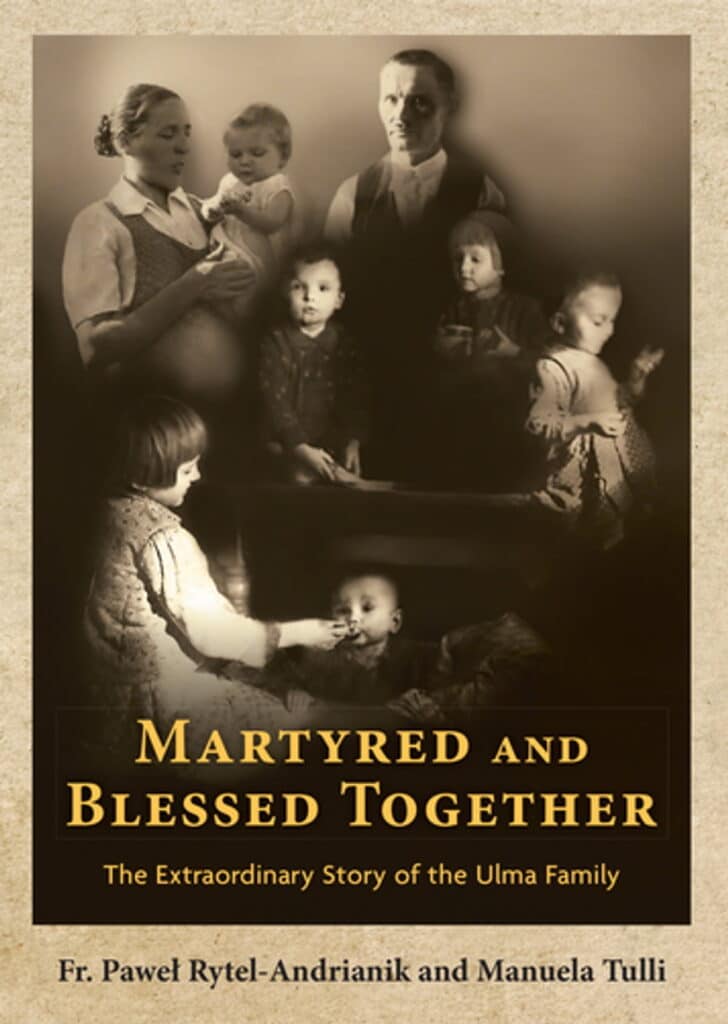
It is as though the Ulma case has opened a new “track” in the history of saintliness.
Cardinal Semeraro: In some ways, yes, because there is a whole family who suffered martyrdom; then the examination of their cause for beatification was conducted together; the decree was approved together; and together they are beatified.
The procedure followed for beatification was that of martyrdom, but there is also talk of alleged miracles occurring through the Ulma family’s intercession. Have you looked into them?
Cardinal Semeraro: No. According to current ecclesiastical discipline, a miracle is not required for martyrdom. For a future canonization, however, a miracle would be needed.
A miracle is also required for the other type of beatification that has been instituted by Pope Francis — namely, the one referring to the “gift of life.” In some respects, it is similar to martyrdom: It is the gift of self, but it is not actual martyrdom. There are already cases: In Italy there is one that can be examined from this perspective of the gift of life. It is the case of Salvo d’Acquisto. But in the case of the gift of life, a miracle is required, and not necessarily the virtue that is referred to as “heroic.” Although the word heroism — let me tell you — is dangerous today, it is misunderstood, because holiness is always the acceptance of a gift from God.
The Ulmas’ home village of Markowa is about sixty kilometers from the Ukrainian border, less than an hour’s drive. The Ukrainians are victims of war and hatred and the same history repeating itself. What can we do to not forget?
Cardinal Semeraro: Prayer is what we hold most dear, it is always available, it is everything to us. There is a Latin phrase: amor vincit omnia (love conquers all). This beatification a few kilometers from the border of a war makes us think. … But the pope always uses the expression of a world war in pieces — that is, it is everywhere. Although now, since there is this conflict in Ukraine, the pope — I think at the Sunday Angelus — always invokes prayer and uses the expression “the tormented Ukraine.” But Pope Francis also reminds us of the many other hotbeds or conflicts all over the world. We are focused on this painful situation because it feels closer, but there are so many situations of violence and war everywhere.
There is an author, I do not remember the name, who says that we have lost the sacrificial spirit. In many cases, for painful situations like war, we have sent help, economic support, or military support; there is so much discussion about this even in Italy, and we believe we have done everything through material help. We feel at peace, and we no longer sense that ability to involve ourselves personally: the compassion, the suffering with others.
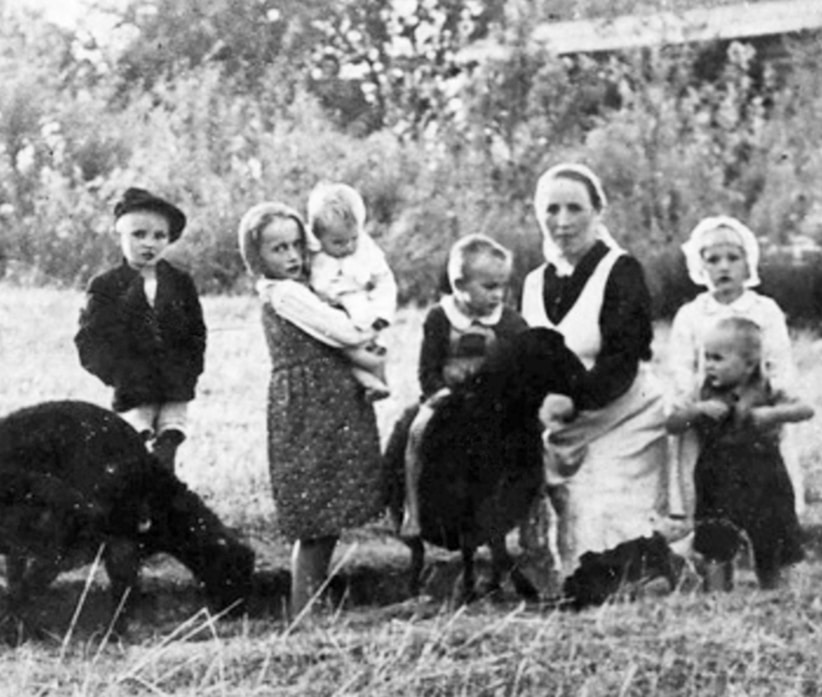
Compassion that the Ulmas, instead, felt and experienced by opening their doors …
Cardinal Semeraro: Yes, theirs is a true example of compassion; they risked their lives to house eight Jews for a year and a half. It is not just about helping; it is compassion that puts us in a position to suffer with the other person in order to help them. Emotional involvement is easy, but compassion is something else.
Let’s talk now about your role as prefect of the Dicastery for the Causes of Saints. How do you present all these stories to the pope to then arrive at a decree that a person can be declared blessed or a saint?
Cardinal Semeraro: I always give the pope a text that consists of three or four pages. At the beginning is the story, followed by the outcome of the investigation on our part, and finally the proposal that is made. The pope listens and then signs the decree. When the hearings are set, he knows that I have to bring him a certain number of decrees, and each one of them is a story. So far I have had as much time as is needed to present the different situations. In fact, sometimes the others, who had to speak to the Pontiff after me, have waited.
How did you present the story of the Ulmas to the pope?
Cardinal Semeraro: I personally felt very invested in this story. This is a beautiful family, the husband and wife loved each other, within nine years they had six children and were expecting another. They were passionate about their work, farming, and they also had hobbies like photography and beekeeping. They are a very lovely family. Both of them had a Christian commitment. The wife attended church and was active in parish groups, and the husband was a highly spirited and well-known character in the village. A really nice family; this touched me and left me thinking a lot because of this communal dimension of holiness.
In your dialogue with Pope Francis, what aspect of the Ulmas’ holiness stood out most?
Cardinal Semeraro: With the pope, we talked about the two particularities of this beatification: the importance of the community dimension, that it is a whole family, and then the singularity of the children and of the baby that the mother was carrying and to whom, perhaps because of the terrible shock of that moment, began to give birth.
Finally, Your Eminence, out of curiosity, do you live better by being among the saints from morning to night?
Cardinal Semeraro: I believe so. I can say that I have many stories that help me to be a good priest and a good Christian.



